Divers Remove 14,000 Pounds of Trash in the Florida Keys
Our buddy team gets the OK signal from our divemaster, his lime green rashguard barely visible through the hazy Key West water, and we take our places. We scan the underwater landscape—in the Keys we are usually on the lookout for eagle rays, sea turtles or reef sharks, but today we’ve gathered here to search for…trash.
I get into formation with my buddies, Teresa Sewell and Kara Norman, two local Key West teenagers. It requires a different kind of focus to discern a fishing line from a coral whip, my brows are furrowed and my eyes become strained from squinting, but these cleanup veterans have no problem finding trash. I notice Kara and Teresa begin to descend upon a long rope, likely the remnant of a derelict fishing trap, and they attempt to remove it without disturbing any animals or their homes.
After a few exasperating attempts, Kara discovers her normally trusty sea snips aren’t quite sharp enough to cut through the rope, and I can almost hear her curse underwater. Another diver hands her a knive and she slowly shears the rope until it breaks free, sawing for several minutes but determined not to leave behind any debris.

Kristin PaterakisKara Norman and Teresa Sewell work together to free a rope from the reef.
The rope is nearly 20 feet long, too long to fit in our mesh bags, forcing Teresa to wrap it around her forearm like an underwater cowgirl. I high-five my team in celebration of our first big haul and continue onward. As I’ll soon learn over the course of one long weekend, meeting divers of all levels, from the Northeast and the Midwest, in professions ranging from students to retirees, therapists and lawyers, we are all here united by the common goal that we share as divers: keep our seas clean.
The Most Anticipated (Trash) Event in Florida
I arrive in Key Largo exhausted after a day of loading my dive and camera gear and driving in the hot Florida sun. Finally out of the miserable Miami traffic, I stretch with a few favorite yoga poses and watch the sun slowly set over the bay, attempting to relax. Trash is invading my thoughts and it will be all I can think about for the next three days as I join over 700 divers for the 2nd Annual I.CARE Trash Derby—an ambitious effort led by Mike Goldberg, cofounder of I.CARE, and an event sponsored by the National Marine Sanctuary Foundation to galvanize divers to be environmental ambassadors of our sea.
As an underwater photographer, dive professional and ocean-lover based in South Florida, this is not my first time picking up trash in the ocean. It’s common to find fishing lines, plastic bags and balloons while diving, and I often surface with as much as I can safely carry. However, the Derby is the first organized cleanup in which I’ve participated and it’s one that comes with a $1,000 prize for the dive center that can clean up the most trash and bragging rights. And I am determined to be part of the winning team.
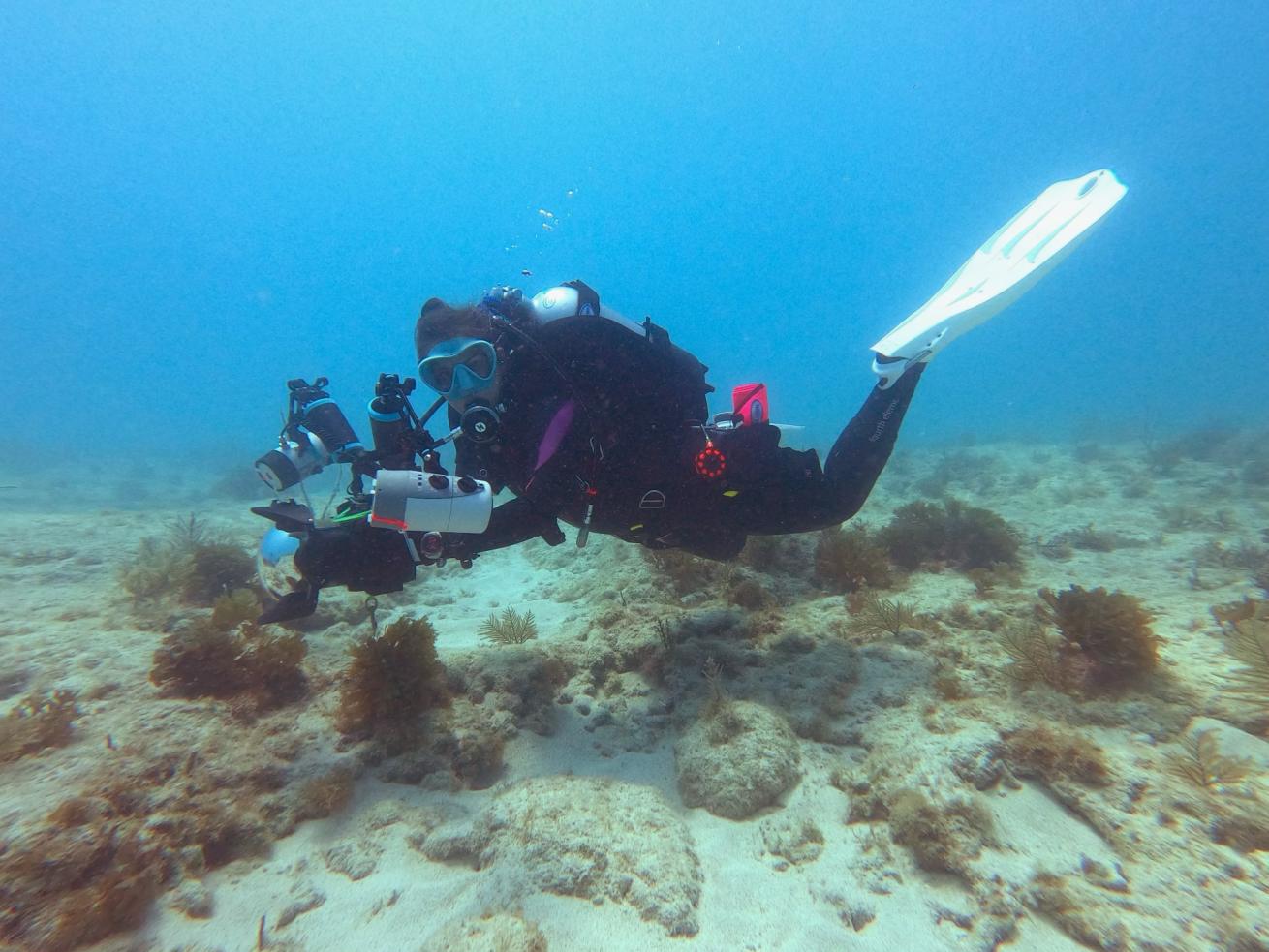
Courtesy Ben PlatterThe author searching for trash (and photo opportunities.)
I reach for my phone to complete the coursework for the PADI Dive Against Debris specialty course in preparation for the competition. Turns out, underwater cleanups are a lot more involved than simply picking up plastic bottles and cutting fishing line. Over the last two decades, researchers have learned so much about the dangers of plastic to our environment. Plastic is the most frequently found marine debris, and scientists are working to understand how microplastics accumulate in marine life, as the degree of toxicity is still unclear.
My phone buzzes and I’m interrupted by my “Chicas” group chat sending messages enraged over a recent viral video of some teenagers dumping bins filled with trash into the ocean after an annual Boca Raton lake party. I roll my eyes and resist the urge to watch the full video, not wanting to give attention to negative actions. The irony is painful, here I am participating in a record-breaking event to clean up our seas and there are teenagers using the ocean as a landfill.
I grin at the swift action of internet vigilantes, impressed to see the teens are already facing charges. I know punishment is only part of the solution, and the focus should be on instilling good habits, but I am glad it’s garnering attention. Throughout the weekend I continue to hear other divers and tourists in the Keys comment on this viral video, some questioning what is wrong with our youth, others feeling inspired to do their part.
I put down my phone and get back to preparing for the next day, loading up on electrolytes and carbohydrates, grabbing my gloves, mesh bag and dive scissors and I think about the small efforts we will make this weekend, and hope that the action of those coming together can have an equal impact on the world around us. Maybe our story could go viral. Realistically, I know it won’t, but maybe our impact is more about the personal connection that we can share with others, and that might be more sustainable.
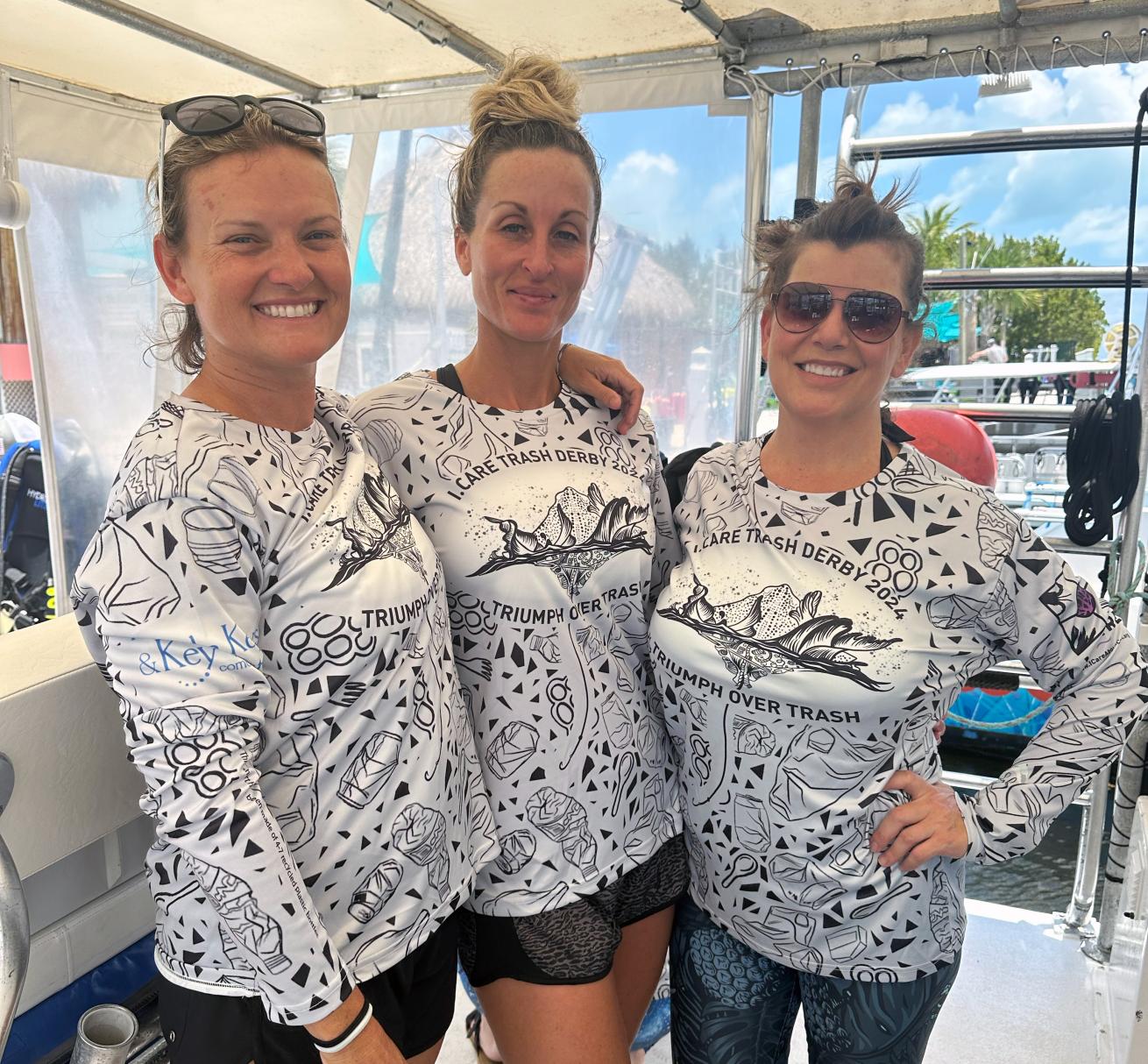
Kristin PaterakisPADI instructor Rachel Adams and her dive buddies Sara Breault and Stacey Mrozinski pose with their 2nd Annual Trash Derby shirts before diving with Horizon Divers in Key Largo.
The Race is On
I am filled with hope as I arrive at Horizon Divers the next morning alongside 20 other divers who have traveled to Key Largo to help clean. I am immediately greeted by Rachel Adams, a PADI instructor I met last week diving in Riviera Beach, where we happily discovered we’d be on the same boat for the Trash Derby. Rachel tells me she participates in various conservation efforts with I.CARE through the dive center she works for, Scuba Outfitters based in Naples. She often leads trips with I.CARE coral outplanting and maintenance program but like me, this is also Rachel’s first organized cleanup.
As I am on assignment for the magazine, I prioritize documenting over actual cleaning. Carrying my large underwater camera onboard, I feel a lot of wide eyes in my direction and start to get the typical questions of what type of camera I have, how much it costs and if I can share my images with them later. Once I explain I’m covering the event for Scuba Diving magazine, a few divers excitedly share their stories of how they got into the sport and what brings them here today. Everyone is from out of town and it is their first cleanup, and the energy is contagious, quickly turning my work assignment into fun. The captain quiets our chatter and Horizon Divers owner Dan Dawson gets on board to deliver a marine debris and safety briefing. He reminds us that lobster season is over, so if we find any lobster traps, they are now considered debris. And with that, the race is on.
We get to the first dive site, the SS Benwood, a natural wreck sunk in 1941 that serves as an underwater photographer’s playground. Instead of heading to the bow to take some photos of schooling French grunts or sleepy sea turtles, we opt to swim in the direction the captain says is a popular fishing spot—knowing that is where we will find the treasure (well, trash).

Kristin PaterakisRachel carries marine debris (a fishing rod) safely back to the boat.
Rachel carefully stows the line and we continue on. After only a few minutes, we encounter some fishing line—never have any of us been so excited to see trash. Dive buddies Rachel and Stacey work together slowly to free the line, making sure to maintain neutral buoyancy and not let their fins kick the fragile reef ecosystem.
A few minutes later I check on the other divers and I see Rachel playing with a fishing rod, excited about her find. She poses for an image and then pridefully continues her search. We find some more fishing line and a metal strap before we surface. Back on the boat and out of our gear, I find the mood has changed slightly, and there is a collective feeling of disappointment that we did not find more. We dive again that afternoon, and though this second site is filled with vibrant purple sea fans and schools of fish, we find even less trash—just some pieces of wood, likely from a fishing trap, and some more fishing line.
The energy and action at the beginning of the afternoon kept me warm, but now I am relieved when Rachel motions to me that she is also cold, and together we resign any hopes of winning the Trash Derby and ascend to our safety stop.

Kristin PaterakisStacey holds up a fishing hook and line she removed from the reef.
I am not alone in the disappointment of our catch, this is a competition after all—and moreover, we all wanted to be part of making a more tangible impact. I fantasized about mounds of trash and anchor lines, or of a dolphin that alerted us to a sea turtle stuck in a fishing net that we must save. Alas, a clean site is what we should have hoped for, and it’s an important reflection on how divers have been keeping some popular dive sites clean.
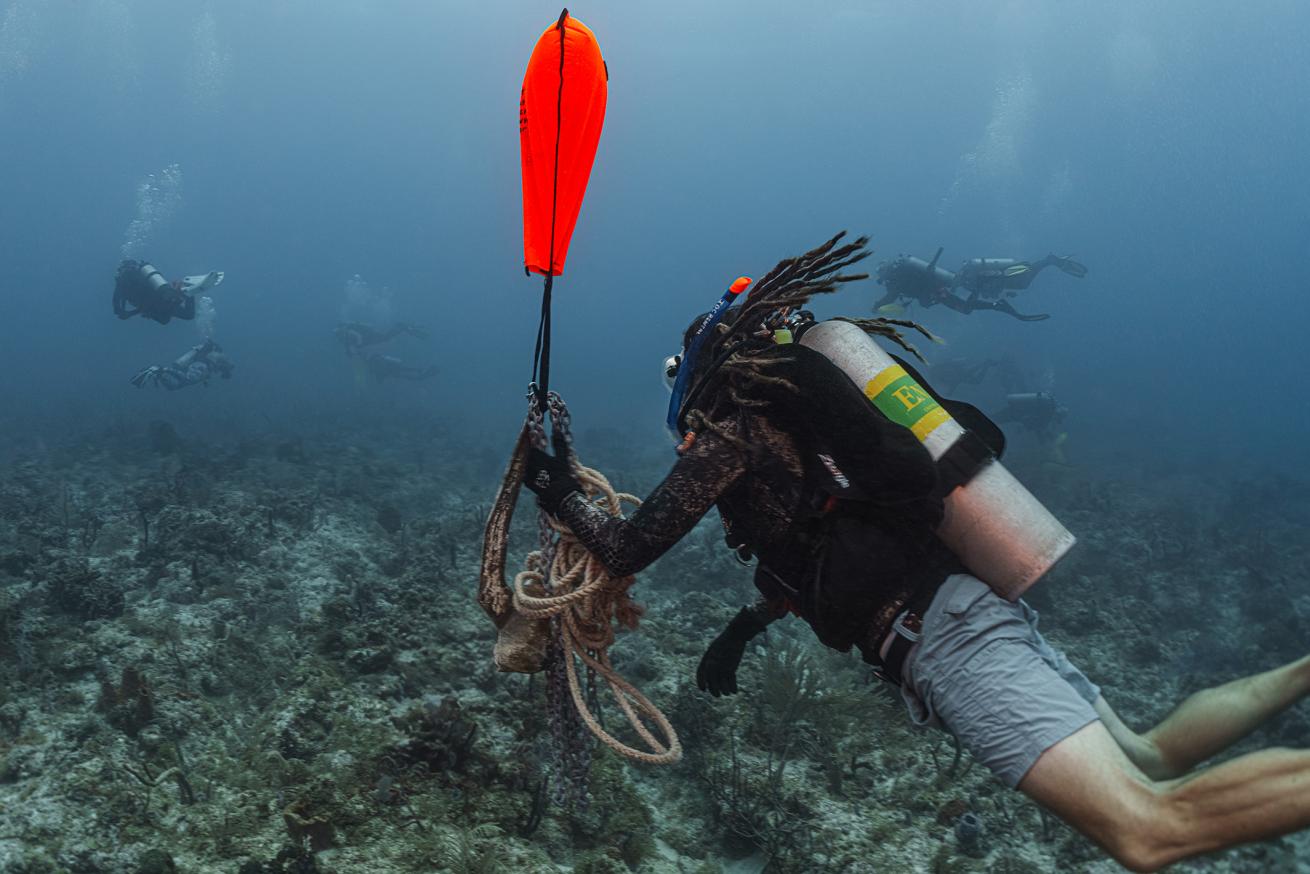
Stan Moniz/PADI AWAREDiver Andrew Morris removes an anchor attached to a rope from a reef off Islamorada, using a lift bag to help him safely bring the debris to the surface.
At the end of the day, the divers swap social media handles and numbers to stay in touch. I clean my gear, upload my photos and videos and then meet up with other PADI staff. PADI Community and Campaigns Manager Jack Fishman mentions his team collected four anchors and about 30 lbs of ghost fishing gear. I quickly learn that some of the dive operators, mostly the ones that participated last year, have developed strategies for where to dive and I am filled with envy. Jack shows me how to log the debris we cleaned up in the PADI AWARE app. Though maybe not as much as his team collected, this process helps me see the impact just one diver might make.
Related Reading: Fighting to Save the Caribbean's Coral Reefs
Round 2 at the Southernmost Point
Ready for more action on day two, I wake up before the sun rises to drive two hours to dive with Southpoint Divers in Key West—wanting to experience the full Trash Derby spirit from the northernmost to southernmost points of the competition. I’ve planned to dive with high school seniors Teresa and Kara, whom I know from my time volunteering with the youth scientific diving nonprofit DiveN2Life. They are here representing the organization and putting the rest of us old folk to shame with their dive skills, knowledge of ocean issues and experience in debris cleanups.
Southpoint Divers has recently increased its conservation efforts, assigning Kim Platt the role of conservation coordinator. A passioinate young woman who I learn is also from Baltimore, MD, her commitment to the cause is evident. The day runs smoothly and she’s even added an extra knowledge review before the dive to make sure we are appropriately prepared to dive and collect debris safely in the Florida Keys National Marine Sanctuary.

Kristin PaterakisSouthpoint staff (in green) and Trash Derby participants during a surface interval in Key West.
Kara and Teresa swap stories about the cleanups they’ve been a part of in the Keys. It warms my heart to see two teenagers bonding over their love for diving and taking care of the ocean. That they spend their free time participating in events like this—at that age, although I did care about the environment, I was not the advocate that they are. I ask Kara her thoughts on how teens her age (Kara just shy of her 18th birthday) feel about environmental issues and if she finds other peers to be as equally involved in taking care of their backyard.
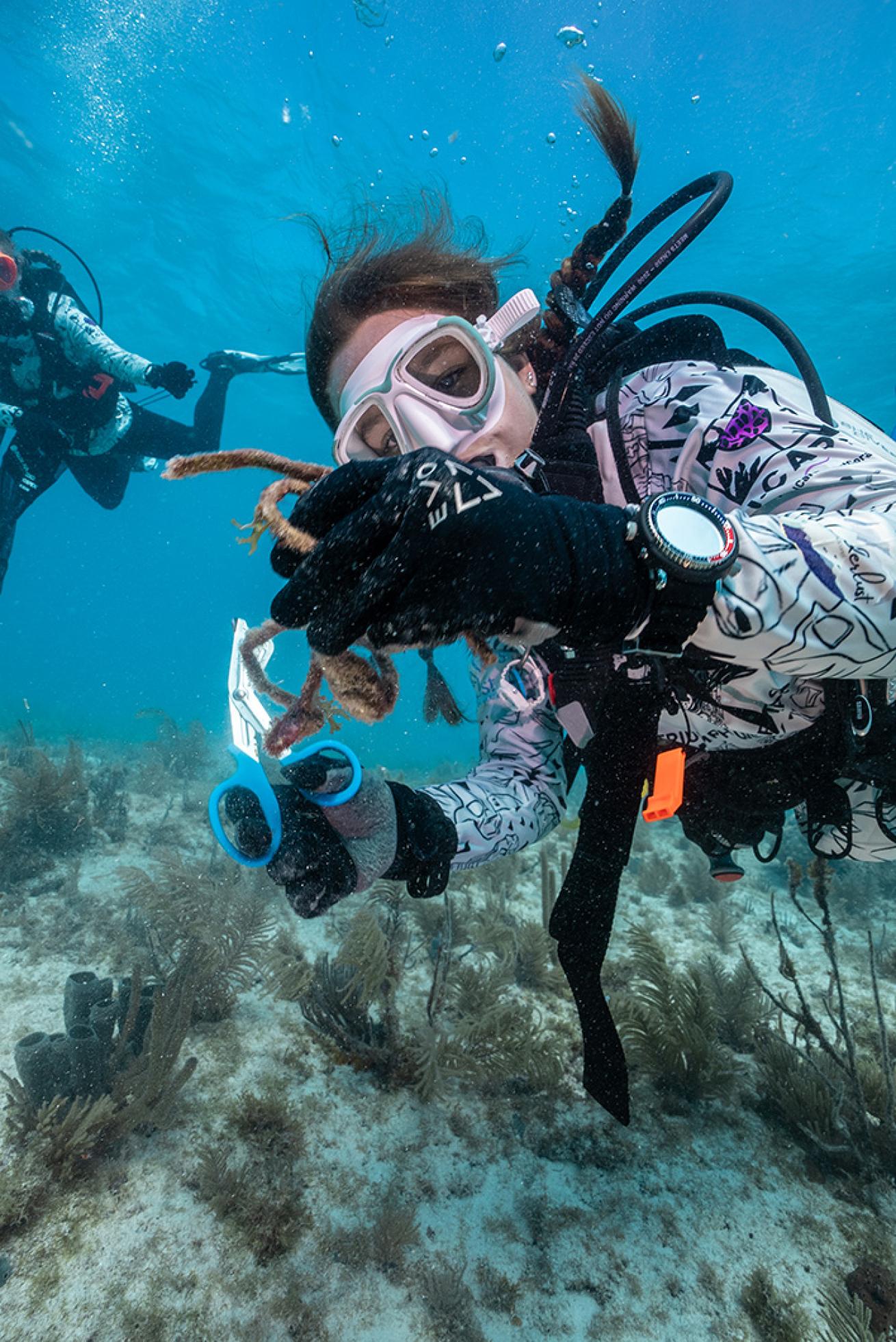
Kara is all smiles after removing marine debris from the reef.
Although she believes her generation is “idealistically aligned with the concept of protecting and restoring our environment” she believes that many struggle to find their niche in the movement. She adds that her generation “doesn’t necessarily realize the broad scope of opportunities that are available to lend a hand” and that the “next step is to motivate or even incentivise them in other ways.” Creating events like competitive (and free to divers) Trash Derbys are an example of such ways.
I drive back to Key Largo, distracted by the sun setting in my rear-view mirror and I notice I am no longer on a mission to win. My competitive fever has chilled, acknowledging that this in fact was not a competition, but a mission in teamwork and collaboration.
Like others I talk to in the Keys, I learn the importance of conservation, especially for dive centers. “Without the reef, there is no diving,” says Patti Mlyniec, owner of Southpoint Divers. “As a dive shop we are the first line of defense for coral. We are able to connect with so many newbies to the ocean world. Anyone entering our shop should leave with a piece of new information.”
Southpoint is starting to host their own cleanups after seeing the demand and success of this weekend. They have at least three planned for the rest of the year and will also run maintenance and outplanting trips to coral nurseries. Even more, their shop will soon have a plastic-free zone and sell only mineral-based sunscreen.

Kristin PaterakisParticipants pose on Southpoint Divers after a successful dive against debris.
After the Party is the Trash-er Party
The main competition is over, but before the Trash Derby and raffle prize winners are announced, it is time for a trashy celebration in Islamorada at Founders Park. I run into familiar faces that I’ve met this weekend, as well as some acquaintances from previous trips to the Keys. We all look a little more put-together out of our wetsuits, and everyone’s a bit sticky in the Florida humidity. But no one seems to mind the heat because the crisp beer, cool snow cones, free samples of rum and live music quickly erase any discomfort.
I’m on PADI booth duty for a couple of hours, encouraging visitors to sign up for PADI Club to get a free subscription to the magazine. During breaks, I help Alina Myers with PADI social team film interviews with PADI divers about their favorite courses (rescue, always rescue!) and what it’s like to be a woman in diving in preparation for PADI Women's Dive Day on July 20, 2024. On my own, I bop between the various booths that are out today, learning about the various nonprofits—many local to the Keys such as REEF, Coral Restoration Foundation, Surfrider Foundation and Mote Marine Laboratory.
The time has come. Everyone gathers around to find out if they won a raffle prize and to see who is taking home prizes. I snap some photos of the winners of the raffle prize, and I am excited to see that Amy and John Wright, a couple from Pennsylvania whom I met on the first day, win a Seiko watch and SCUBAPRO regulator.
“It was so encouraging to my husband and me to see so many people wanting to do good in a world where it feels like we hear devastating news daily,” Amy says.
For this environmentally passionate couple, diving was the highlight of their vacation, but even more so because “knowing that the reefs in the Keys would be healthier and thrive better because a group of divers came together to make a difference.”
The winners are announced for the first categories:defending champs of the private boat division Wasting Time held reign and Key Dives won the most unique piece of trash prize (a kitchen sink).
And the grand prize goes to…Quiescence—this small six-pack boat managed to collect over 49 pounds of trash per diver. Though I suspect there may have been some strategy in choosing the location of their dive sites, Luke Durso of Quiescence says their focus was on safety and participant involvement, leaving the heavy lifting to experienced instructors. Having conducted debris removal dives as part of “Goal Clean Seas: Florida Keys” for years, they had the expertise and the drive to win the trophy. Durso hopes that the success of the Trash Derby will continue and that even more organizations will get involved to continue to make this a free-to-the-public event for promoting healthy oceans.
The celebration continues into the night with members of the local dive pro community. I’m in awe of their ability to carry energy through the long days in the sun, knowing they’ll be back on the boat the next morning hours before I get out of bed. I had commented earlier in the week that I can’t imagine living in Key Largo, it is a small town and it can be emotional watching the degradation of the reef.
But in this moment I think of Jack Fishman’s aghast reply, “look around you, look at all these individuals here—many young people passionate about diving and truly caring about making a change.” This is the type of people and community I want to be a part of, those who inspire others at home and on vacation; they are a part of the change through programs like Dive Against Debris and also coral restoration.

Kristin PaterakisQuiescence wins the 2nd Annual I.CARE Trash Derby.
When talking to Goldberg about the event, he avows it is his dream “that every diver, when on a dive trip, gives one day back to help our ocean. No matter the destination, if they take on that challenge, a healthier ocean can be accomplished.” I admire Goldberg and his efforts, and the success of the event is testimony that he is accomplishing his goal.
This event restores my hope, seeing people who aren’t already embedded in the conservation or dive world taking time and spending money to help take care of our reefs. It’s heartwarming to see how people from all walks of life can come together to make a difference.
The I.CARE Trash Derby is a prime example of bringing people together and creating a ripple effect. Every dive counts. Let’s make the movement to clean up our seas go viral—and I hope to see you at next year’s Trash Derby!
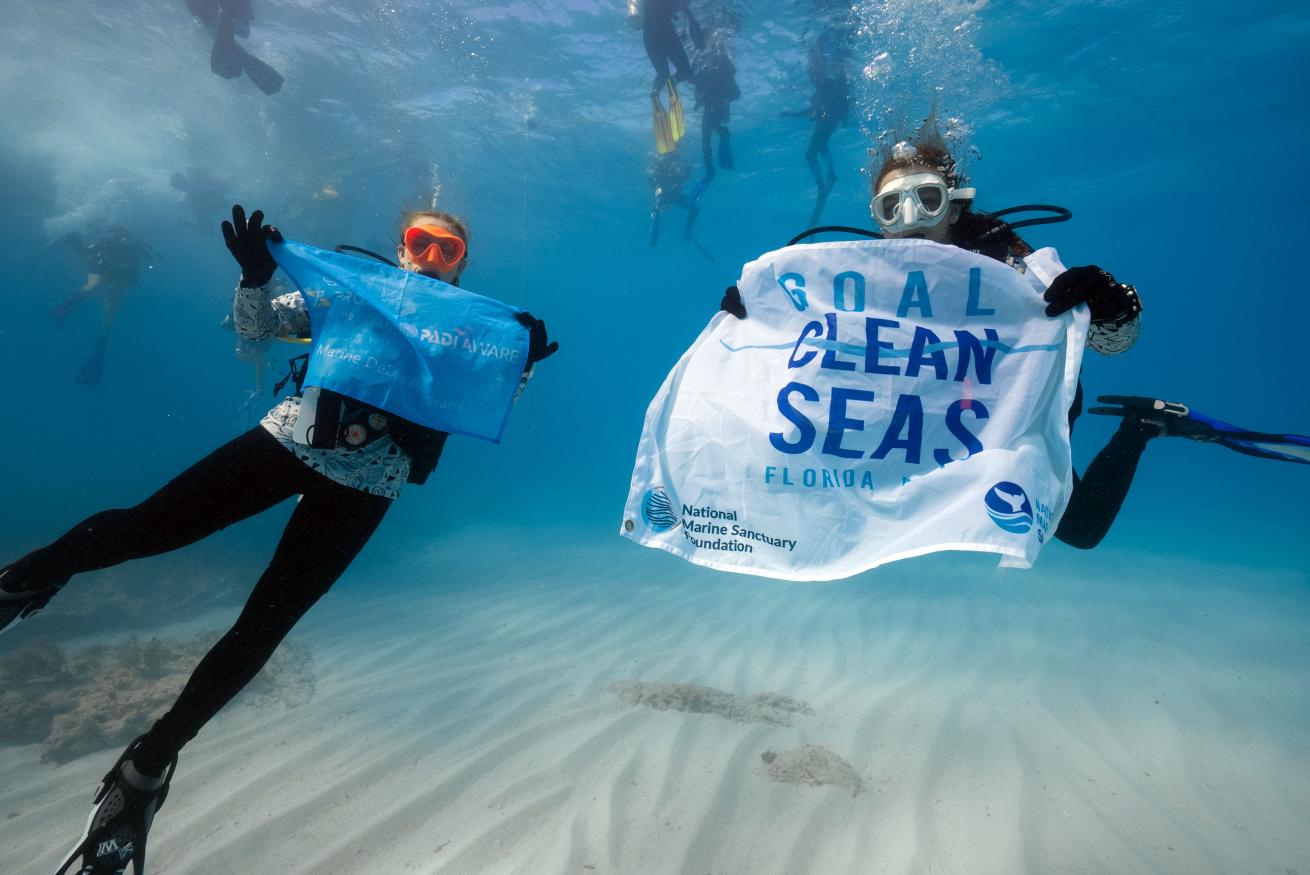
Kristin PaterakisKey West locals Kara and Teresa participate for the first time in the I.CARE Trash Derby.
How to Get Involved
- Start small. Bring a mesh bag, gloves and a dive knife or scissors with you on every dive.
- Check with your local dive shop to see if they are running any Dive Against Debris dives.
- Enroll in a Dive Against Debris PADI Specialty course.
- Don’t live near the ocean? Remember that about 80 percent of the physical debris found in the oceans comes from land-based sources. Join or start a local inland cleanup knowing this will help reduce waste downstream.
- No cleanups planned? Start your own! You can start simply with a meetup or work with your local dive shop to organize an event.
Activities occured within NOAA Florida Keys National Marine Sanctuary under permit.











